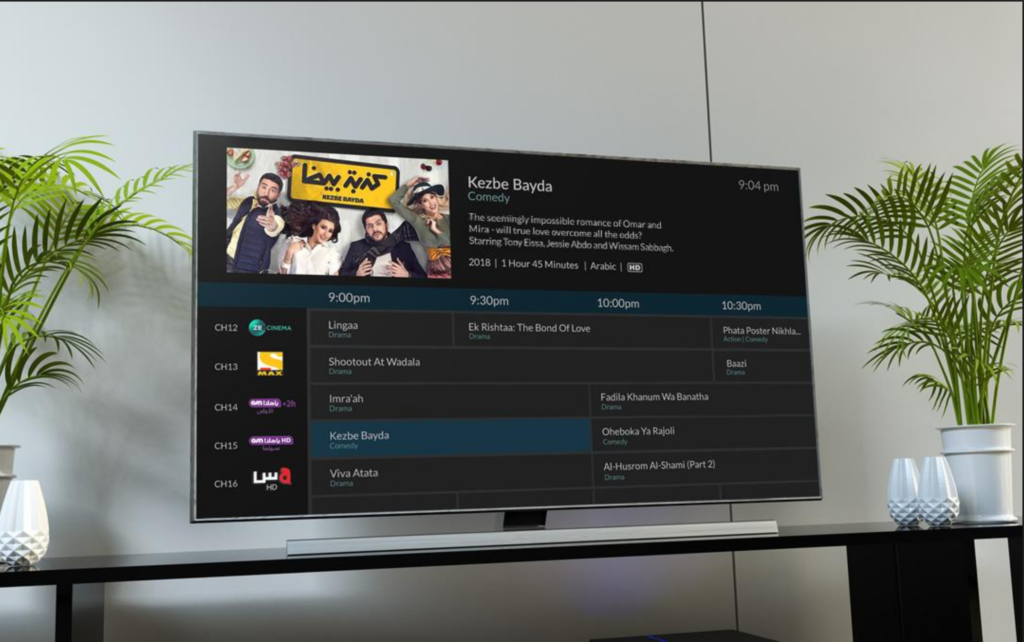Analytics
Gracenote Expands its Global Video Data Solution to Middle East (SCN)
Story Highlights
Gracenote has expanded its Global Video Data solution to the Middle East, in a move the Nielsen division said March 11 will “help drive next-generation TV and movie search, discovery and navigation for emerging digital” and Internet Protocol TV (IPTV) platforms.
United Arab Emirates-based Etisalat’s E-Vision division is one of the first pay TV operators to deliver Gracenote-powered advanced viewer experiences for IPTV, over-the-top (OTT) and video on demand (VOD) platforms across TV and mobile applications reaching nearly 1 million viewers in the region, according to Gracenote. As part of the deal, Gracenote extended its strategic relationship with E-Vision, which can now “leverage a unified collection of metadata spanning TV and movie content from around the globe with country-level detail,” Gracenote said.
Using Global Video Data, E-Vision is creating next-generation TV guide experiences for 600 channels across its IPTV, OTT, VOD and mobile platforms, Gracenote said, adding: “Once implemented, the product powers advanced content search, discovery and recommendation features, using a global ID structure, which enable providers to quickly and easily connect” viewers to the movies and TV shows they will enjoy most.
 “Operators and broadcasters in the Middle East are looking to use deep descriptive metadata and imagery to create entirely new viewer experiences centered on engagement and interactivity,” Geet Lulla, managing director for India, Middle East and Southeast Asia at Gracenote, said in the announcement. Gracenote’s new Global Video Data offering is the “key enabler of next-generation content search, discovery and navigation that will help TV operators and broadcasters in the region engage consumers and deliver breakthrough user experiences,” he added.
“Operators and broadcasters in the Middle East are looking to use deep descriptive metadata and imagery to create entirely new viewer experiences centered on engagement and interactivity,” Geet Lulla, managing director for India, Middle East and Southeast Asia at Gracenote, said in the announcement. Gracenote’s new Global Video Data offering is the “key enabler of next-generation content search, discovery and navigation that will help TV operators and broadcasters in the region engage consumers and deliver breakthrough user experiences,” he added.
Gracenotefirst announced Global Video Data in early 2017. “It was a first-of-its-kind data solution providing TV schedules and program information in more than 35 languages covering more than 85 countries around the world,” Lulla told the Media & Entertainment Services Alliance (MESA) after the March 11 announcement. He added: “As the amount of entertainment content has only increased since then, regional and international TV providers increasingly need solutions like this to connect their end users to all the great content available to them and build loyalty for their services.”
As emerging markets shift towards digital and IPTV delivery, broadcasters and operators need to “understand the value of metadata and imagery to the viewer experience as well as the role these assets play in search, discovery and navigation,” Gracenote said, adding its an end-to-end solution for broadcasters and operators “will enable them to outsource metadata and image creation, management and delivery for next-generation TV experiences.”
By leveraging Gracenote’s Global Video Data solution, broadcasters and operators are able to “engage viewers and drive tune-in by presenting up-to-date TV schedules, deep descriptive information about TV shows and movies and high-quality episodic imagery in their program guides and user interfaces,” the company pointed out.
For the Middle East region specifically, Gracenote Global Video Data is providing TV schedules for more than 850 channels in all, multi-language Arabic and English descriptive data for movies and TV shows, and imagery that the company said “powers innovative guides across” linear TV, OTT and VOD platforms. Gracenote’s “platform-agnostic approach ensures that all broadcasters and TV operators can provide consistent experiences for programming across all services and platforms,” it noted.
“Gracenote was instrumental in E-Vision’s migration to a new delivery platform for our IPTV and OTT services,” E-Vision CEO Humaid Sahoo Alsuwaidi said in the news release.
Gracenote Global Video Data is providing a global solution for over-the-air, cable and satellite TV providers, smart device manufacturers and OTT services that are looking to expand internationally and need regionally relevant data, it said. Among other features, it offers single application program interface (API) access for data covering more than 85 countries and territories across North America, South America, Europe, Asia Pacific and now the Middle East.









